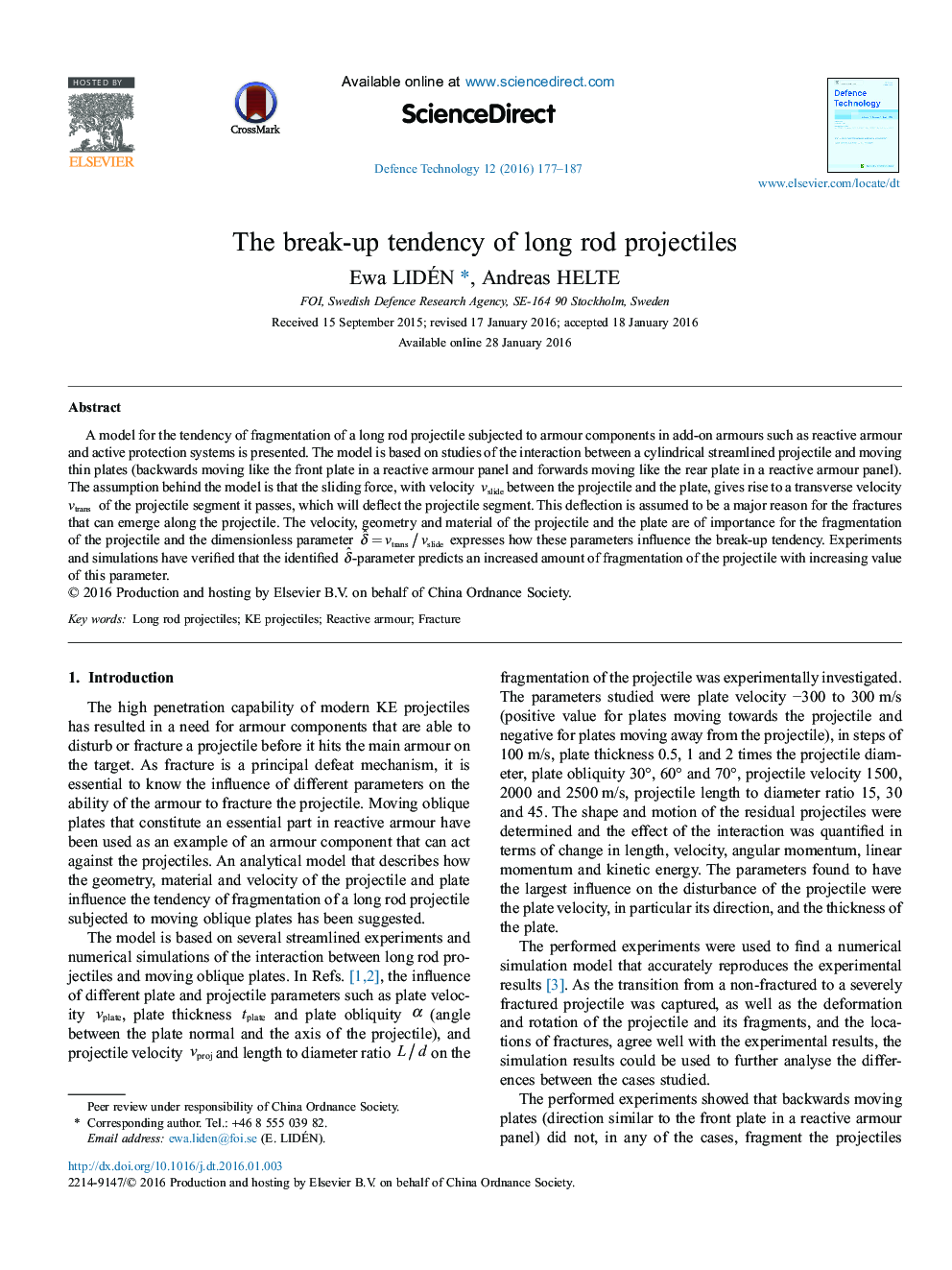| Article ID | Journal | Published Year | Pages | File Type |
|---|---|---|---|---|
| 759457 | Defence Technology | 2016 | 11 Pages |
A model for the tendency of fragmentation of a long rod projectile subjected to armour components in add-on armours such as reactive armour and active protection systems is presented. The model is based on studies of the interaction between a cylindrical streamlined projectile and moving thin plates (backwards moving like the front plate in a reactive armour panel and forwards moving like the rear plate in a reactive armour panel). The assumption behind the model is that the sliding force, with velocity vslidevslide between the projectile and the plate, gives rise to a transverse velocity vtransvtrans of the projectile segment it passes, which will deflect the projectile segment. This deflection is assumed to be a major reason for the fractures that can emerge along the projectile. The velocity, geometry and material of the projectile and the plate are of importance for the fragmentation of the projectile and the dimensionless parameter δ^=vtrans/vslide expresses how these parameters influence the break-up tendency. Experiments and simulations have verified that the identified δ^-parameter predicts an increased amount of fragmentation of the projectile with increasing value of this parameter.
